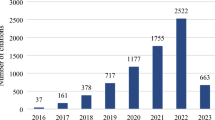Abstract
This study revisits the celebrated p-efficiency concept introduced by Prékopa (Z. Oper. Res. 34:441–461, 1990) and defines a p-efficient point (pLEP) as a combinatorial pattern. The new definition uses elements from the combinatorial pattern recognition field and is based on the combinatorial pattern framework for stochastic programming problems proposed in Lejeune (Stochastic programming e-print series (SPEPS) 2010-5, 2010). The approach is based on the binarization of the probability distribution, and the generation of a consistent partially defined Boolean function representing the combination (F,p) of the binarized probability distribution F and the enforced probability level p. A combinatorial pattern provides a compact representation of the defining characteristics of a pLEP and opens the door to new methods for the generation of pLEPs. We show that a combinatorial pattern representing a pLEP constitutes a strong and prime pattern and we derive it through the solution of an integer programming problem. Next, we demonstrate that the (finite) collection of pLEPs can be represented as a disjunctive normal form (DNF). We propose a mixed-integer programming formulation allowing for the construction of the DNF that is shown to be prime and irreducible. We illustrate the proposed method on a problem studied by Prékopa (Stochastic programming: handbook in operations research and management science, vol. 10, Elsevier, Amsterdam, 2003).
Similar content being viewed by others
References
Alexe, G., & Hammer, P. L. (2006). Spanned patterns for the logical analysis of data. Discrete Applied Mathematics, 154(7), 1039–1049.
Alexe, S., & Hammer, P. L. (2007). Accelerated algorithm for pattern detection in logical analysis of data. Discrete Applied Mathematics, 154(7), 1050–1063.
Boros, E., Hammer, P. L., Ibaraki, T., & Kogan, A. (1997). Logical analysis of numerical data. Mathematical Programming, 79, 163–190.
Boros, E., Hammer, P. L., Ibaraki, T., Kogan, A., Mayoraz, E., & Muchnik, I. (2000). An implementation of logical analysis of data. IEEE Transactions on Knowledge and Data Engineering, 12(2), 292–306.
Calafiore, G. C., & Campi, M. C. (2005). Uncertain convex programs: randomized solutions and confidence levels. Mathematical Programming, 102, 25–46.
Charnes, A., Cooper, W. W., & Symonds, G. H. (1958). Cost horizons and certainty equivalents: an approach to stochastic programming of heating oil. Management Science, 4, 235–263.
Dentcheva, D., Lai, B., & Ruszczyński, A. (2004). Dual methods for probabilistic optimization problems. Mathematical Methods of Operations Research, 60(2), 331–346.
Dentcheva, D., Prékopa, A., & Ruszczyński, A. (2001). Concavity and efficient points of discrete distributions in probabilistic programming. Mathematical Programming, 47(3), 1997–2009.
Hammer, P. L. (1986). Partially defined Boolean functions and cause-effect relationships. International conference on multi-attribute decision making via or-based expert systems. University of Passau, Passau, Germany.
Hammer, P. L., & Bonates, T. O. (2006). Logical analysis of data: from combinatorial optimization to medical applications. Annals of Operations Research, 148(1), 203–225.
Hammer, P. L., Kogan, A., Simeone, B., & Szedmak, S. (2004). Pareto-optimal patterns in logical analysis of data. Discrete Applied Mathematics, 144, 79–102.
Ibaraki, T. (2010). Partially defined Boolean functions. In Y. Crama & P. L. Hammer (Eds.), Boolean functions—theory, algorithms, and applications. Cambridge: Cambridge Press University (in press).
Lejeune, M. A. (2008). Preprocessing techniques and column generation algorithms for p-efficiency. Journal of Operational Research Society, 59, 1239–1252.
Lejeune, M. A. (2009). Linear reformulation of probabilistically constrained optimization problems using combinatorial patterns. International colloquium on stochastic modeling and optimization. Dedicated to the 80th birthday of Professor András Prékopa. Piscataway, NJ 2009.
Lejeune, M. A. (2010). Pattern-based modeling and solution of probabilistically constrained optimization problems. Stochastic programming e-print series (SPEPS) 2010-5.
Lejeune, M. A., & Noyan, N. (2010). Mathematical programming approaches for generating p-efficient points. European Journal of Operational Research, 207(2), 590–600.
Lejeune, M. A., & Ruszczyński, A. (2007). An efficient trajectory method for probabilistic inventory-production-distribution problems. Operations Research, 55(2), 378–394.
Luedtke, J., Ahmed, S., & Nemhauser, G. (2010). An integer programming approach for linear programs with probabilistic constraints. Mathematical Programming, 122(2), 247–272.
Martinez-Trinidad, J. F., & Guzmán-Arenas, A. (2001). The logical combinatorial approach to pattern recognition, an overview through selected works. Pattern Recognition, 34(4), 741–751.
Prékopa, A. (1970). On probabilistic constrained programming. In Proceedings of the Princeton symposium on mathematical programming (pp. 113–138). Princeton: Princeton University Press.
Prékopa, A. (1973). Contributions to the theory of stochastic programming. Mathematical Programming, 4, 202–221.
Prékopa, A. (1990). Dual method for a one-stage stochastic programming with random rhs obeying a discrete probability distribution. Zeitschrift of Operations Research, 34, 441–461.
Prékopa, A. (1995). Stochastic programming. Dordrecht: Kluwer Academic.
Prékopa, A. (2003). Probabilistic programming models. In A. Ruszczyński & A. Shapiro (Eds.), Stochastic programming: handbook in operations research and management science (Vol. 10, pp. 267–351). Amsterdam: Elsevier. Chapter 5
Prékopa, A., Vizvári, B., & Badics, T. (1998). Programming under probabilistic constraint with discrete random variable. In F. Giannessi, S. Komlósi, & T. Rapcsák (Eds.), New trends in mathematical programming. Dordrecht: Kluwer Academic.
Ruiz-Shulcloper, J., & Abidi, M. A. (2002). Logical combinatorial pattern recognition: a review. Transworld Research Networks, 3, 133–176.
Ruszczyński, A. (2002). Probabilistic programming with discrete distribution and precedence constrained knapsack polyhedra. Mathematical Programming, 93, 195–215.
Torvik, V. I., & Triantaphyllou, E. (2009). Inference of monotone Boolean functions. Encyclopedia of Optimization, 1591–1598.
Urbano, R. H., & Mueller, R. K. (1956). A topological method for the determination of the minimal forms of a Boolean function. IRE Transactions on Electronic Computers, EC-5, 126–132.
Author information
Authors and Affiliations
Corresponding author
Additional information
The author is supported by Grant # W911NF-09-1-0497 from the Army Research Office.
Rights and permissions
About this article
Cite this article
Lejeune, M.A. Pattern definition of the p-efficiency concept. Ann Oper Res 200, 23–36 (2012). https://doi.org/10.1007/s10479-010-0803-1
Published:
Issue Date:
DOI: https://doi.org/10.1007/s10479-010-0803-1




